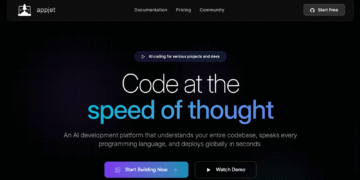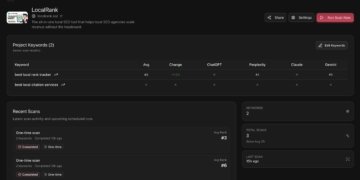
Various specialized AI models are used behind the scenes at ChatGPT. (Illustration generated with ChatGPT)
ChatGPT users have the choice between different AI models with different features and use cases. However, the company’s model names are difficult for laypeople to understand. The following overview makes it easier.
The models available today can basically be divided into two main categories:
“GPT” models are designed for immediate responses and are particularly suitable for creative applications such as text generation, thematic discussions or idea development. They are classified as “generative AI”.
“o” models, on the other hand, are designed for analytical tasks in which they take an intermediate step. They first analyze the query before formulating an answer and are referred to as “reasoning AI”. These models work more slowly but more thoroughly than GPT variants and are often subject to usage restrictions due to higher operating costs.
Competitors such as Anthropic’s Claude or Google’s Gemini combine both variants under one roof. OpenAI says it is working on a similar solution. It is currently unclear when it will be released.
ChatGPT’s “mini” models, on the other hand, are more compact, faster versions of the full versions. Their disadvantage: they are less powerful.
Let’s take a closer look at some of the main models:
GPT-4o: The universal model for general applications and the default AI model of ChatGPT
GPT-4.1 mini: The fastest and most cost-effective model, to which free accounts are automatically switched when certain limits are reached
OpenAI o3: Specialized in complex reasoning processes, requires longer processing times
OpenAI o4-mini: Compact reasoning AI variant
OpenAI o4-mini-high: More powerful version of o4-mini, recommended by OpenAI for programming and visual reasoning
These models are the technical foundation of almost all ChatGPT functions. They enable a wide range of applications from idea discussions to document creation and text analysis.
Generally speaking, not all models are available to all users and their use is limited depending on the tariff. Those who use ChatGPT for free, for example, usually only have access to the most basic models, while particularly powerful AI is reserved for paid accounts. More information can be found in Smart Content Report’s ChatGPT overview.
It also explains useful functions and their use cases such as Deep Research or Canvas. Furthermore, readers find an overview of the different ChatGPT plans from “free” to “Pro”.
CONTENTMEISTER LLC
Calle de Oriente 2850
87507 Santa Fe
Vereinigte Staaten
Jan Tissler
Smart Content Report is a website and newsletter on the topic of AI. German journalist and online publisher Jan Tissler has been following the exciting and rapid developments in this industry since January 2024, particularly from a content marketing perspective. He uses AI himself and documents the prompts he uses on the site. Website and newsletter are published in German and English.
The Smart Content Report is a service of UPLOAD Magazin, a major German-language publication and learning platform revolving about content marketing. Jan Tissler publishes it together with the experienced content professional Falk Hedemann.
Jan Tissler has more than 30 years of professional experience, 25 of them online. After a thorough apprecenticeship at Burda Media, he worked in various positions as an online editor and managing editor, while also working on his own ideas and projects online. Born in Hamburg, Germany, he now lives at the southern tip of the Rocky Mountains in Santa Fe, New Mexico, USA.
This release was published on openPR.














